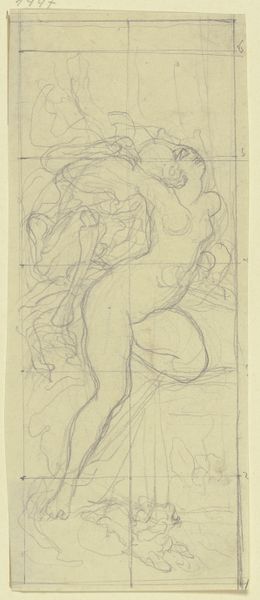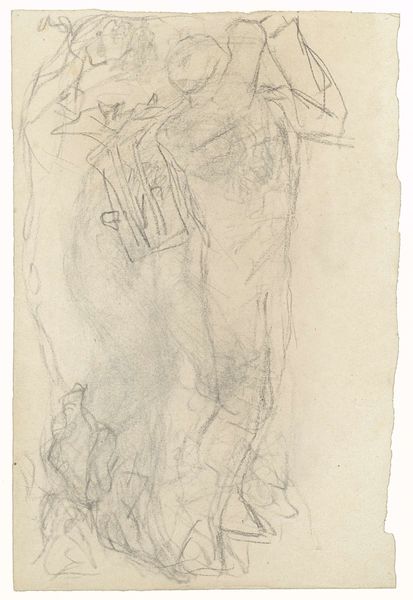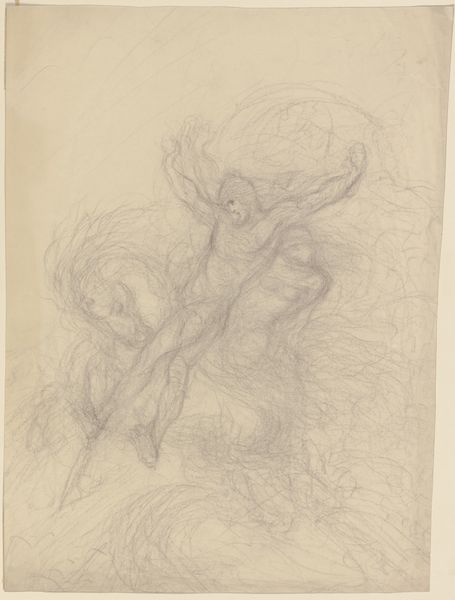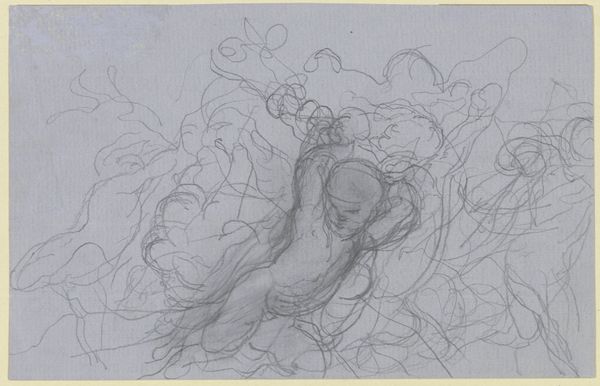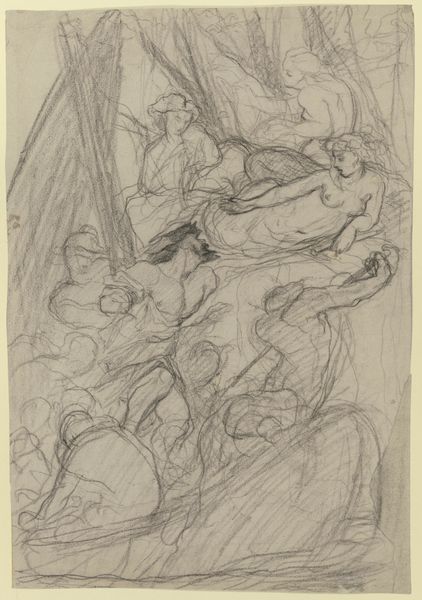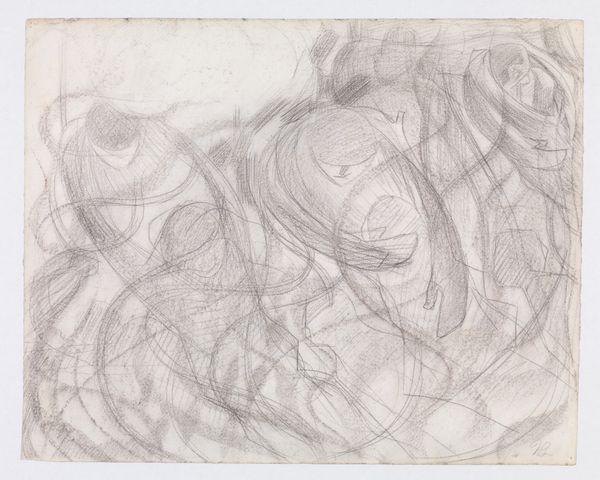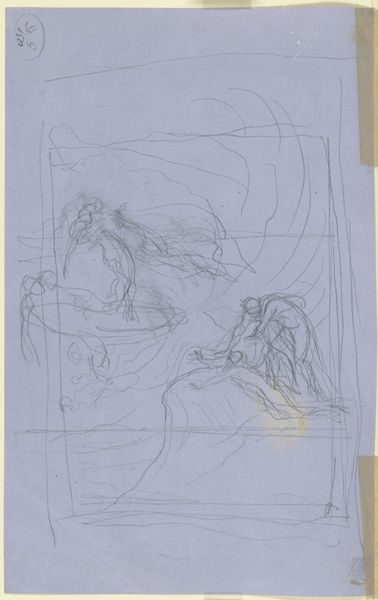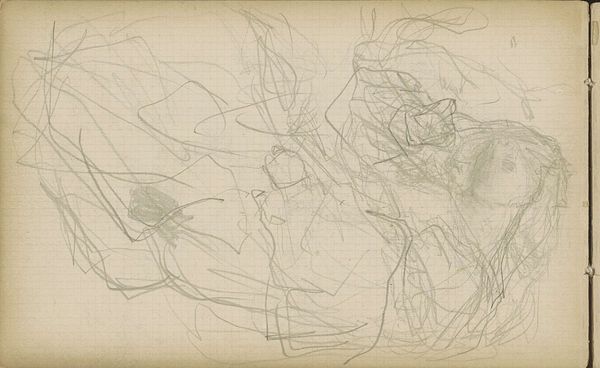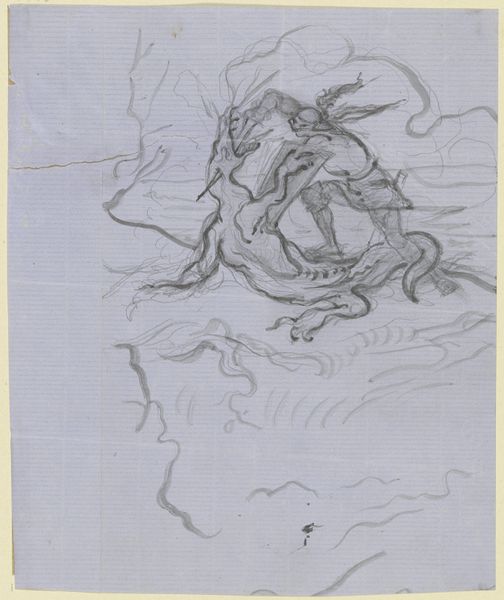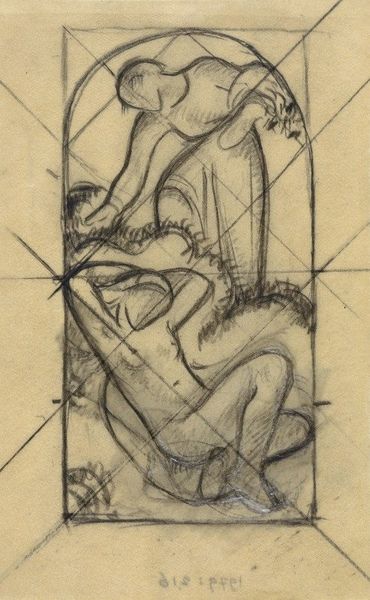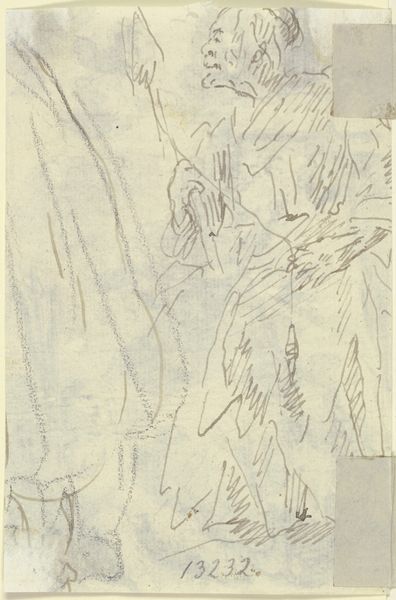
drawing, pencil
#
portrait
#
drawing
#
art-nouveau
#
pen sketch
#
figuration
#
linocut print
#
hand drawn
#
pencil
#
line
#
symbolism
Dimensions: height 64 mm, width 42 mm
Copyright: Rijks Museum: Open Domain
Editor: This is "Ontwerp voor een sieraad" – "Design for Jewelry" – by Mathieu Lauweriks, dating from around 1874 to 1932. It appears to be a pencil drawing. I find the swirling lines very dreamlike, almost hallucinatory. What do you see in this piece? Curator: Well, immediately, I’m struck by the context: Lauweriks designing jewelry. Jewelry in this era was not just ornamentation; it was deeply embedded in systems of value and social display. It spoke volumes about the wearer's status, wealth, and even their taste. Editor: So, the material itself dictated its social function? Curator: Precisely! The *means* by which this design would translate into a tangible, wearable object becomes critical. How would the artist's vision be realized through precious metals, skilled labor, and market demand? I'd also ask: who was this jewelry *for*? Was it meant for mass production or a bespoke commission? Editor: That shifts my perspective. I was thinking purely about aesthetics, but the intended purpose and the socioeconomic implications change everything. Curator: Consider the labor involved! The design is one thing, but the hands that would manipulate the materials, the societal pressures surrounding luxury... it all converges. It's a fascinating microcosm of production and consumption in that era. Don’t you agree? Editor: I do now. It makes me think about the gap between artistic vision and the realities of the marketplace. There's so much more than meets the eye here. Curator: Indeed. We started with a drawing, but we've ended up discussing class, labor, and the tangible expression of societal values. That’s materiality at work.
Comments
No comments
Be the first to comment and join the conversation on the ultimate creative platform.
